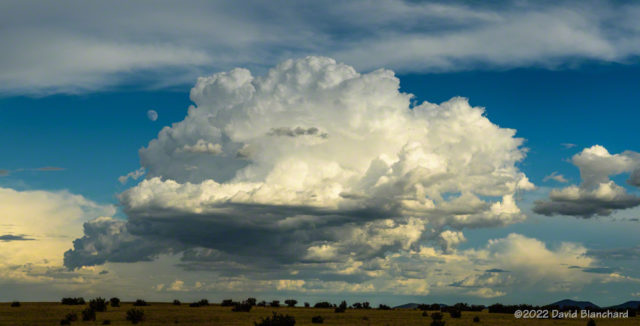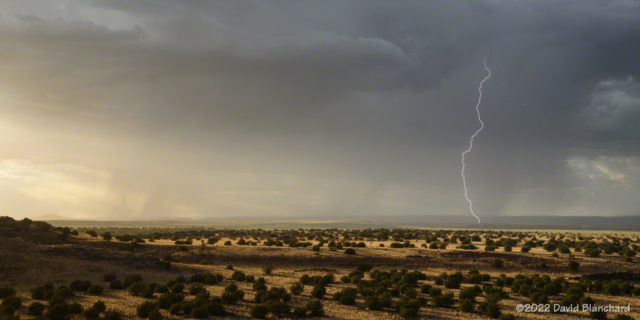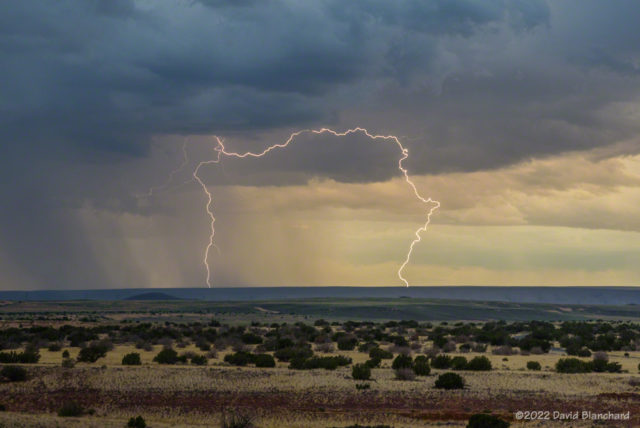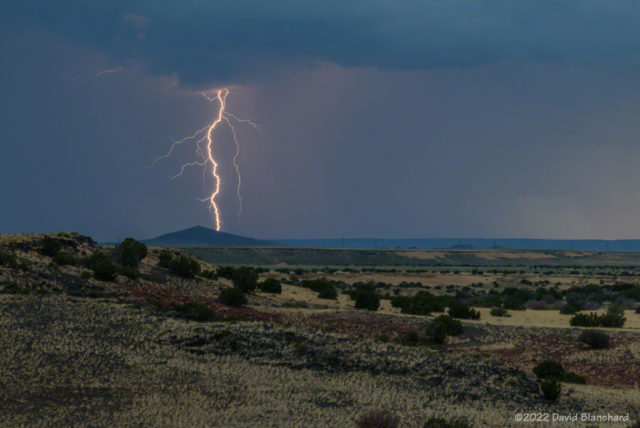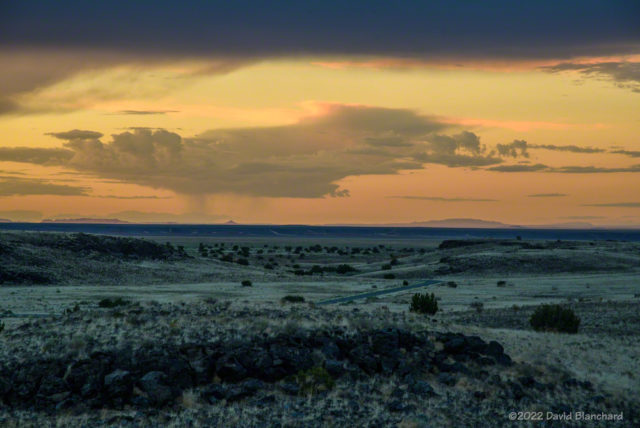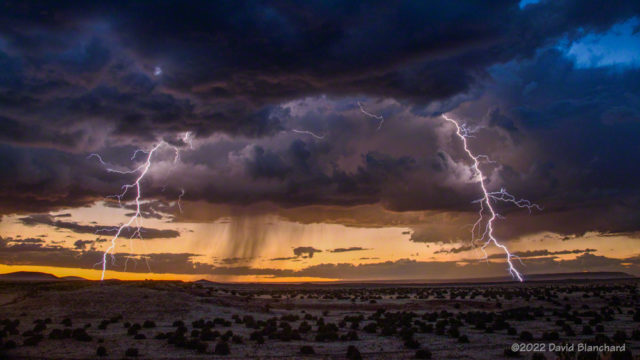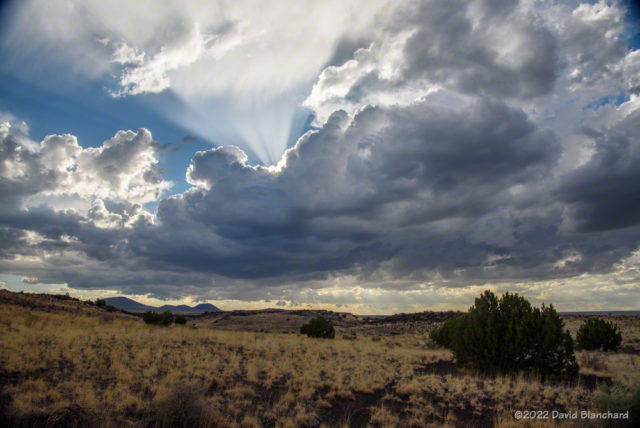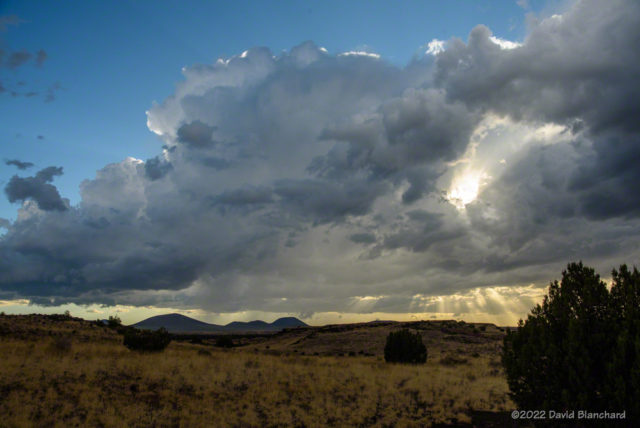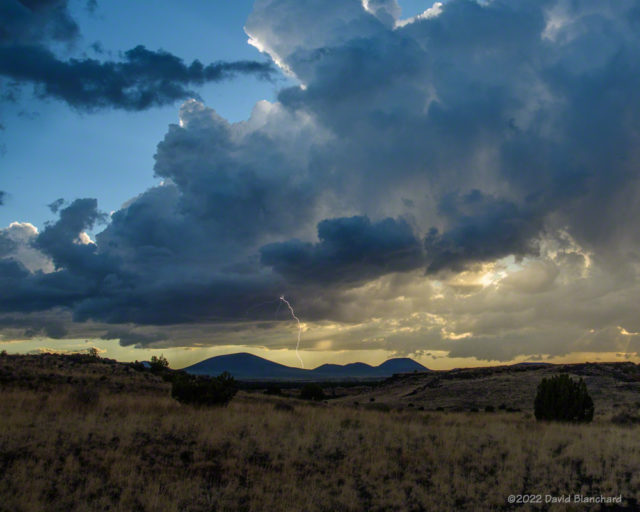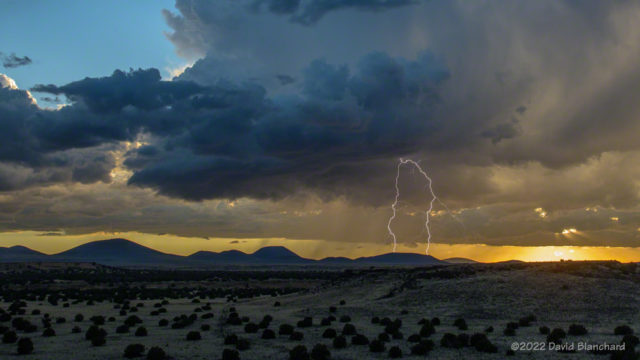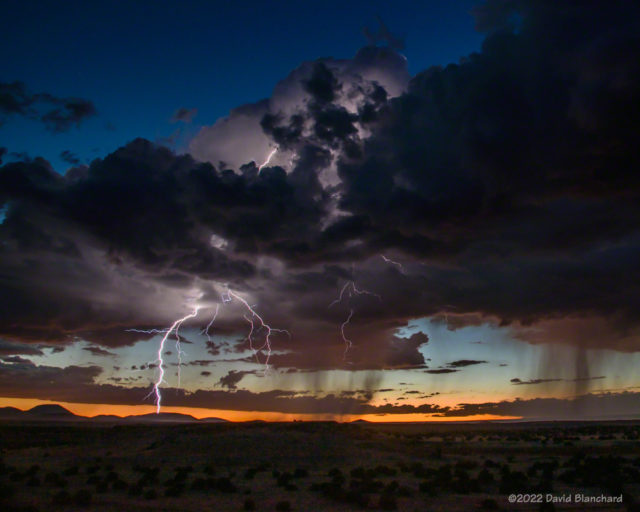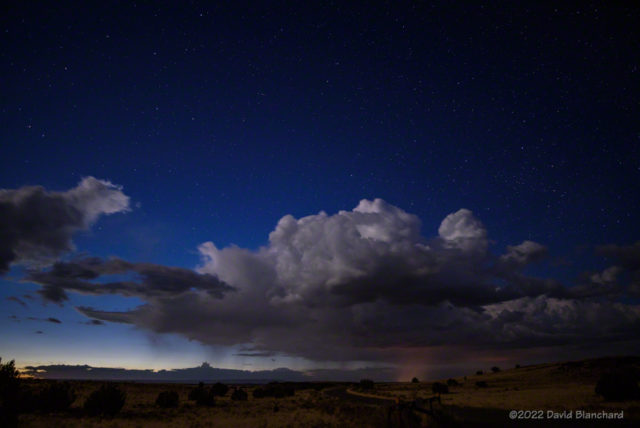I was fortunate to see another spectacular launch from Vandenberg Space Force Base on Christmas Eve morning. I typically check the launch listing sites every few days to keep track of when the next launch will be. These are listed weeks or even months ahead of the launch date–although the dates can and do change. There are exceptions to this advance posting: certain top-secret satellites are often announced with only 24 hours notice. The SARah 2 & 3 satellites had this abbreviated announcement.
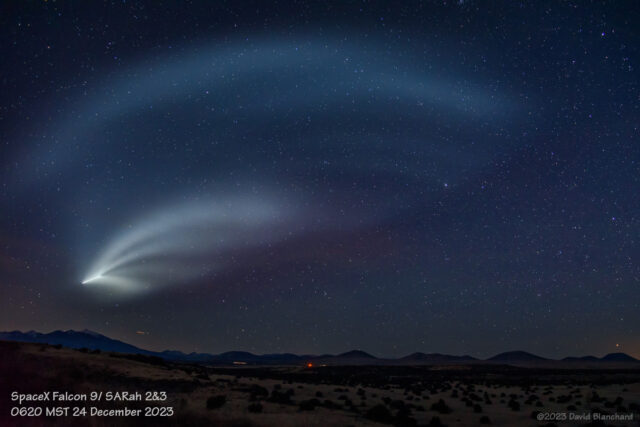
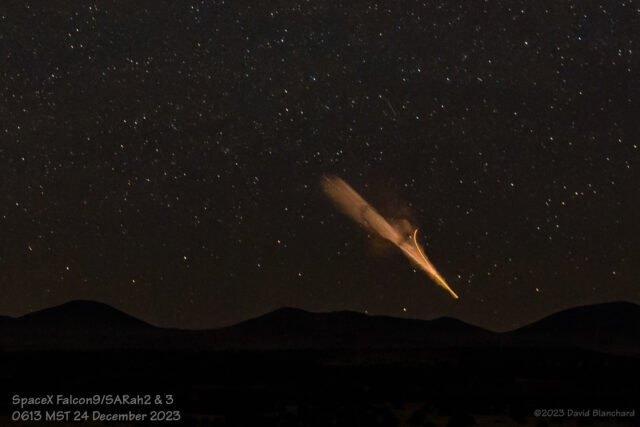
Fortunately, I happened to check the updated schedule about 12 hours before launch so I was able to make preparations for viewing it.
The launch was scheduled for 0611 MST (0511 PST) on the morning of December 24. I went north of Flagstaff to the San Francisco Volcanic Field.
The launch was on time at 0611 MST and about a minute later I was able to see the rocket as it rose above the horizon. I wasalso able to photograph the first stage separation. A few minutes later the high-level clouds appeared once the rocket had ascended high enough to be illuminated by the Sun–which was still well below the horizon at my location.
Here are a few photographs of the launch plus a time-lapse video that shows the dramatic expansion of the high-altitude cloud from the rocket exhaust.
SpaceX/Falcon 9 launch of the SARah 2 & 3 satellites.
The next launch is in a week but may be too late in the evening to catch the last light of twilight.
